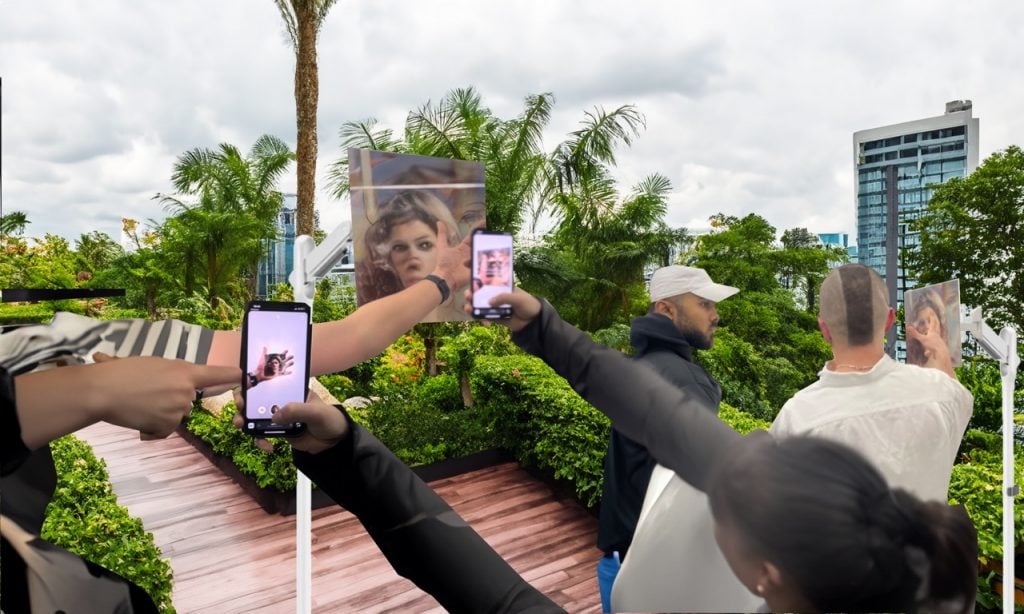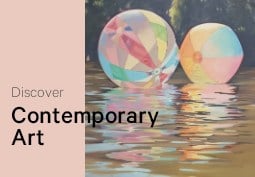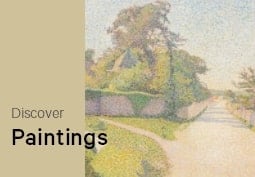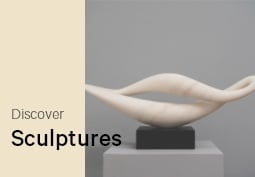Art Fair
Enter Art Fair’s Visionary Path through ‘Betwixt – Analogue and Digital Realms’
By Artland Editors
As digital technology becomes increasingly ingrained in everyday life, the art world is undergoing a significant transformation. Enter Art Fair’s 2024 Art Program, ‘Betwixt – Analogue and Digital Realms,’ curated by Diana Velasco, stands at the forefront of this shift, exploring the concept of “phygital”—a fusion of physical and digital elements that reflects the ongoing evolution in how we interact with and experience art.
Velasco’s program is particularly relevant now, as the boundaries between physical and digital realms blur more than ever. Digital devices have become indispensable in our routines, influencing everything from how we consume media to how we communicate and work. This transition is evident in the art world, too, especially following the 2019 lockdowns that accelerated the adoption of digital art. Since 2020, digital art has become more accessible, reaching beyond traditional art institutions and engaging a broader audience. However, this shift also raises crucial questions about ownership, transparency, and ethics, especially with the rise of blockchain technology and AI. While these technologies offer exciting opportunities, they also concentrate control within a few tech giants. This duality—between the potential and pitfalls of digital technologies—makes the ‘phygital’ concept central to the discussions and artworks in this year’s fair.
The Evolution of Phygital Art: Merging Worlds
The merging of physical and digital art is not a new phenomenon, but the scale of its influence today is unprecedented. Early pioneers like Vera Molnár began integrating technology into their work as far back as the 1960s, but the mainstream acceptance of digital art has grown exponentially in recent years. Velasco points out that artists like LoVid and Auriea Harvey, both featured in the Enter Art Program, have been exploring these intersections since the 1990s, blending performance, music, and technology long before digital art became widely recognized.
What sets this moment apart is the broad audience engagement with digital art, driven by the pervasive influence of technology in daily life. From gaming to social media, large segments of the global population are interacting with digital environments, making the interplay between classical art forms and new technologies both relevant and essential. Velasco’s curation aims to bridge these worlds, offering a platform where analogue and digital realms converge to create inspiring and thought-provoking experiences.
Artworks that Define the Phygital Experience
The Art Program will feature a variety of works that exemplify this fusion. LoVid’s ‘heartsleeves’ transforms the audience from passive spectators to active co-creators, allowing participants to generate and tokenize their own digital portraits. This interactive video portrait emphasizes the collaborative nature of digital art, blending human creativity with generative technology to democratize art-making.
Similarly, Human Unreadable by Operator pushes the boundaries of generative art by integrating dance with blockchain technology. The piece explores how choreography can be encoded and made collectible, creating a new form of art ownership that evolves with audience interaction. This generative dance performance exemplifies the dynamic relationship between technology and human experience, making the artwork a living, breathing entity.
One of the standout performances in this year’s program is The Invisible Party, a mixed-reality experience created by a French interdisciplinary artist group. This piece merges traditional dance with augmented reality, inviting attendees to explore the boundaries of reality and space through an app that reveals hidden AR performances at specific locations within the fair. This blending of physical and digital art forms invites deeper engagement and challenges the audience’s perceptions of reality.
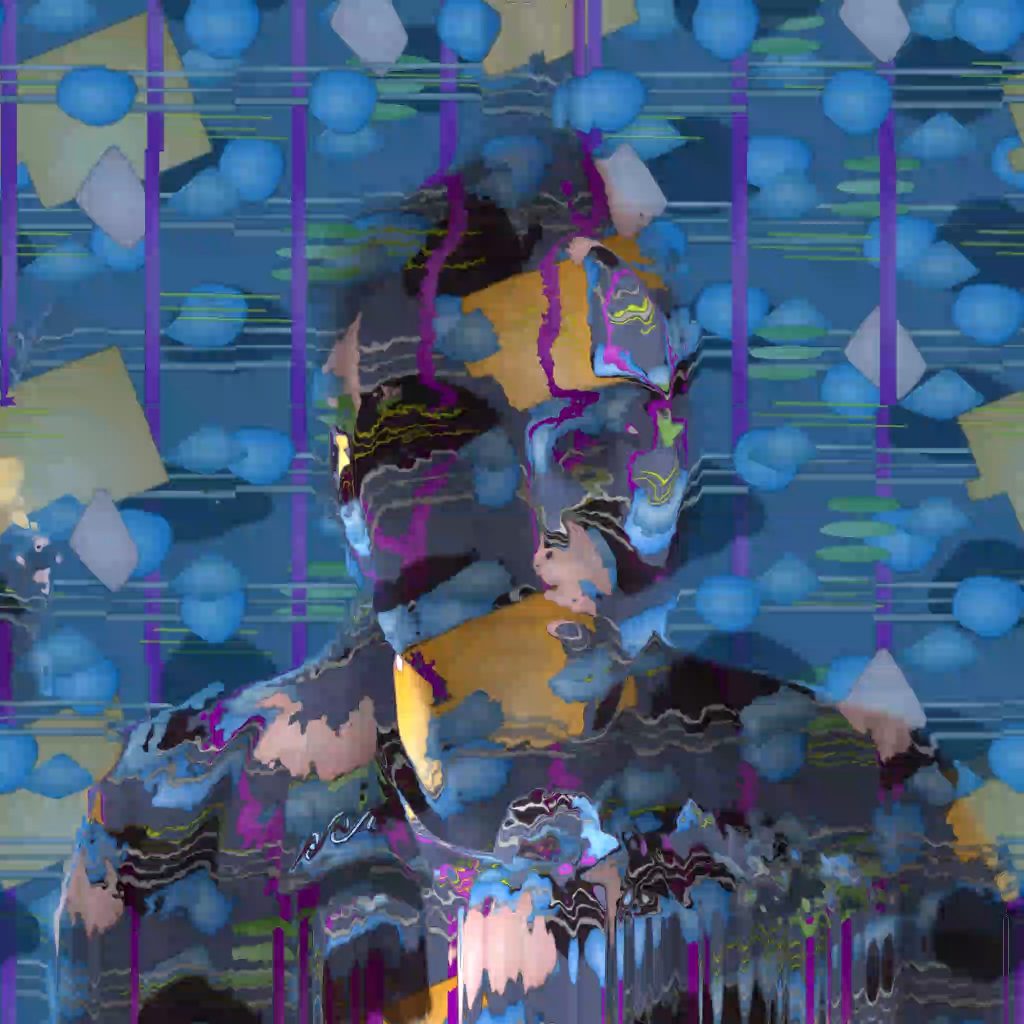
The Talk Program: Exploring the Future of Digital Art
In addition to the artworks, the fair’s Talk Program will delve into the latest trends and museum initiatives surrounding digital art. Speakers like Madeleine Pierpont from MoMA and conceptual artist Jonas Lund will explore how blockchain technology (Web3) and digital media are reshaping museums and artistic practices.
Pierpont is expected to discuss MoMA’s digital initiatives, including the Postcard project and the AI-driven “Refik Anadol: Unsupervised” exhibition, which highlight how institutions are embracing digital art. These conversations are crucial for understanding how new technologies are being integrated into the art world, influencing everything from the creation and curation of art to how it is experienced by the public.
Jonas Lund’s contribution will likely focus on the participatory nature of digital art and how technology enables new forms of interaction between artists, collectors, and audiences. His work often engages with the behavior of collectors, sometimes altering the artwork based on their actions, underscoring the dynamic and fluid nature of digital art.
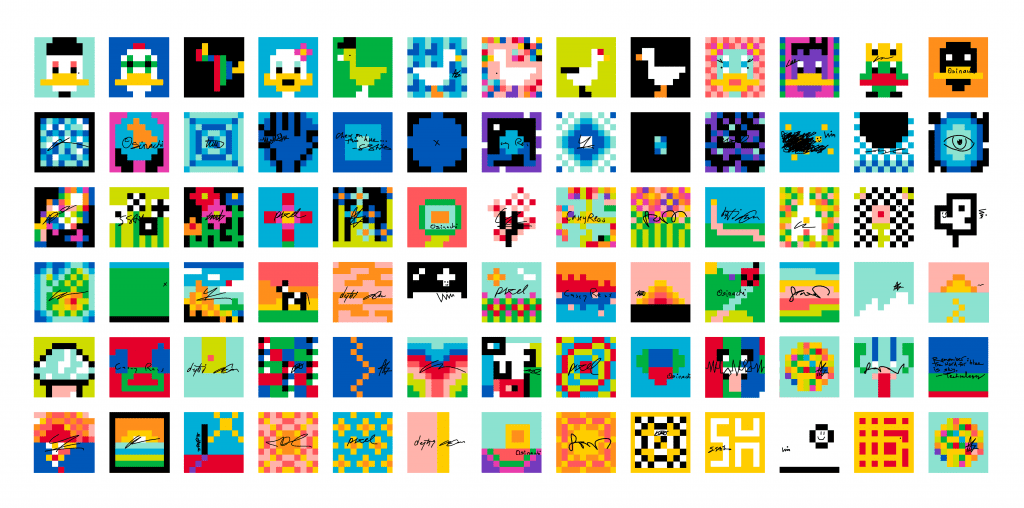
Enter Art Fair’s Role in Championing Digital Art
The non-profit Enter Art Program and the newly introduced Digital Section at the fair exemplify how digital art is gradually entering the more established art scene. Velasco sees this as a critical step in attracting both new audiences and existing visitors to explore these new art forms. By showcasing works that intersect classical and digital art, Enter Art Fair fosters important debates and reflections on the evolving role of technology in art.
This commitment to digital art is further demonstrated by Velasco’s leadership of the Museum of Nordic Digital Art (MoNDA), which partners with established institutions to present digital art in innovative ways, such as pop-up exhibitions and displays in public spaces. These initiatives reflect the broader movement towards integrating digital art into traditional institutions, ensuring that these new forms of expression receive the recognition they deserve.
Reflecting on Art’s Future
As Enter Art Fair continues to evolve, the ‘Betwixt – Analogue and Digital Realms’ program offers a powerful example of how art can transcend traditional boundaries. By merging physical and digital worlds, the fair not only creates new artistic experiences but also sparks essential conversations about the future of art in a rapidly changing world.
For Velasco, the most compelling insights often emerge at the intersections between the analogue and digital, the classical and new media. It is within these spaces that the future of art is being shaped—one that is innovative, inclusive, and deeply engaged with the technological transformations of our time.
Through this year’s Art Program and Talk Program, Enter Art Fair invites all attendees to reflect on these developments and leave with a deeper understanding of how art can inspire, challenge, and connect us in the digital age.
Relevant sources to learn more
More articles from Artland Magazine you may like:
Artland Interviews: Sophie Neuendorf
In Conversation With Julie Leopold, Founder and CEO of Enter Art Fair
An Exclusive Conversation with VOLTA’s New Artistic Director, Lee Cavaliere
Other relevant sources:
ENTER ART FAIR
Art Program 2024 – Enter Art Fair
